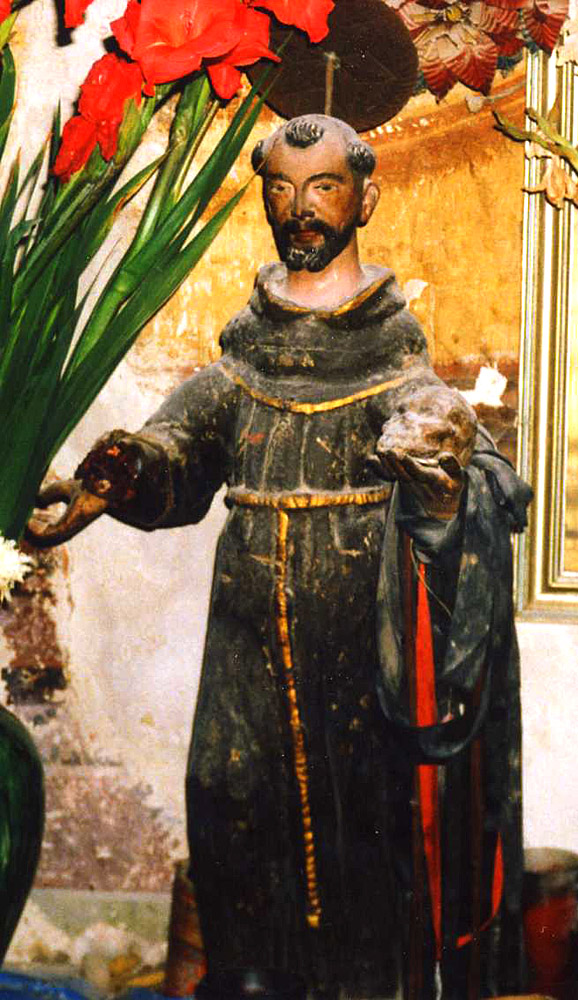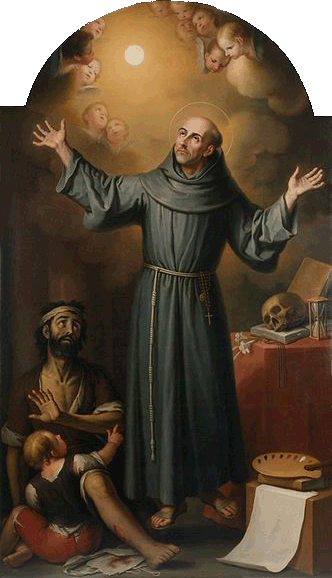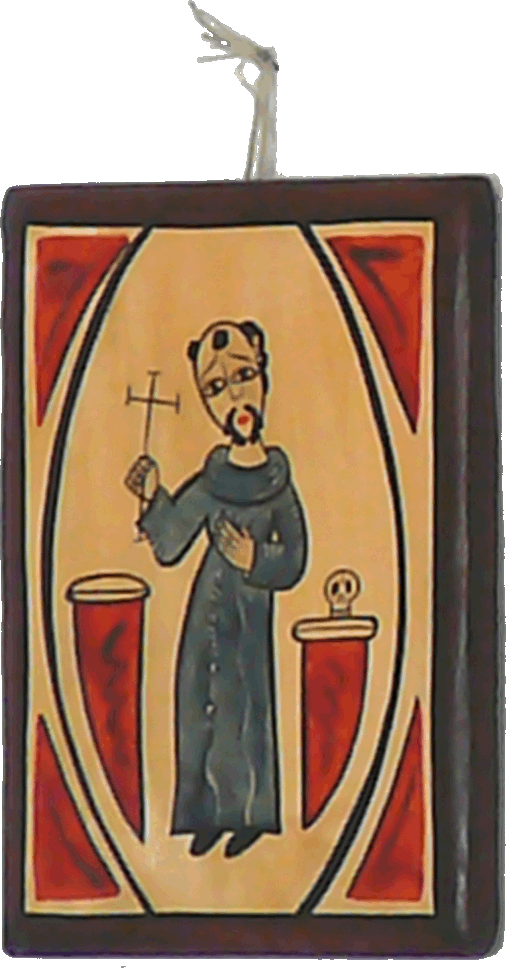There are two Franciscan saints named Nicholas. One, St. Nicholas Tavelic, was martyred in the Holy Land in 1391 after he and his companions preached at the Mosque of Omar. He was canonized in 1970, and his feast day is December 5.
The other, St. Nicholas Factor, was a noted preacher in 16th-century Spain. He was canonized in 1786, and his feast day is December 23. He was something of a mystic who scourged himself before giving sermons and was said to have reached such heights of ecstasy that companions had to dunk him in water to cool him down (Butler, IV, 562-63). Most likely this is the St. Nicholas of the Mexican santos. A skull also figures in the Catalan painting of Nicholas Factor at right.
The man and child in rags in the second picture refer to the saint's solicitude for the poor and especially for paupers in hospitals (Mazara vol. 4 pt. 2, 719).
Prepared in 2014 by Richard Stracke, Emeritus Professor of English, Augusta University

Statue of "San Nicolás" in San Juan Guelavia, Mexico (See description page)

Catalan painting of St. Nicholas Factor, 1788 (See description page)

19th-century painting from New Mexico (See description page)
ATTRIBUTE
- Skull
MORE IMAGES
- 19th century: A statuette of St. Nicholas Factor from the same site in New Mexico.